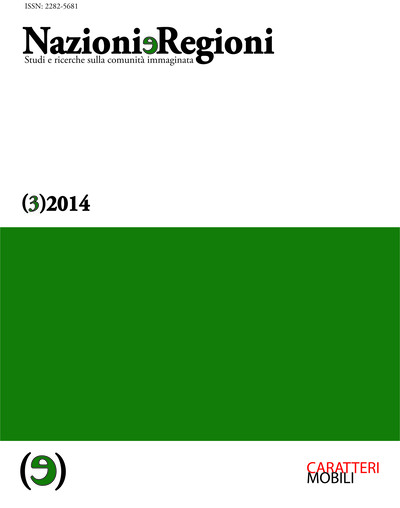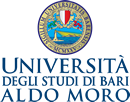Nazione nomade: cinema, nazione e memoria nel Kazakistan post-sovietico
DOI:
https://doi.org/10.15162/2282-5681/1590Parole chiave:
Cinema kazako, nomadismo, nazionalismo kazako, Nazarbaev, Kazakh cinema, nomadism, Kazakh nationalismAbstract
L’articolo esamina il tentativo del nuovo stato-nazione kazako di fornire al suo popolo una storia e il modo in cui esso si articola come una sorta di «nazione nomade»: un vivace processo, tuttora in corso, per costruire allo stesso tempo un sentimento di identità nazionale ed un senso di memoria storica centrato sui nomadi. Lo stato ha assunto la guida di questo esercizio di nation-building, e il cinema kazako, spesso dipendente dal sostegno statale, ha giocato anch’esso un ruolo da protagonista. L’autore sostiene che i registi kazaki, rispondendo all’invito del presidente Nursultan Nazarbaev a creare delle narrazioni nazionali, si sono rivolti ai nomadi e al passato nomade come fonte per la memoria e la nazione kazake. La reazione dei cittadini kazaki è stata variegata: molti hanno celebrato quello che vedevano come un «nuovo patriottismo kazako» articolato sul grande schermo. Altri hanno criticato in questo cinema certi aspetti della nazione nomade, in particolare il ruolo dello stato kazako nel promuoverlo e l’adattamento delle tecniche hollywoodiane da parte dei registi kazaki. Altri ancora si sono tenuti alla larga dal cinema kazako in generale. Di conseguenza, verso la fine del 2009 Nazarbaev ha dichiarato che i registi kazaki dovrebbero iniziare a prestare maggiore attenzione al presente e non solo al passato; al cinema però la nazione nomade non ha cessato di esistere. Il film Myn Bala («Mille ragazzi») del maggio 2012 scava nello stesso territorio storico di Nomad del 2005, il film che per molti aspetti ha segnato l’inizio della svolta del nuovo cinema kazako verso il passato nomade.
This article examines the new Kazakh nation-state’s attempt to provide a history to its people and how this attempt functions as a sort of «nomadic nationhood»: an ongoing, vibrant process of building both a sense of national identity and a sense of historical remembrance that center on nomads. The state has taken the lead in this nation-building exercise, and Kazakh films, often relying on state support, have also played a starring role. The author argues that Kazakh filmmakers, responding to President Nursultan Nazarbayev’s calls to create national narratives, have turned to nomads and the nomadic past as the source for Kazakh nationhood and remembrance. The reception among Kazakh citizens has produced a mixed bag: many audience members have celebrated what they see as a «new Kazakh patriotism» articulated onscreen. Others have criticized certain aspects of the onscreen nomadic nationhood, particularly the Kazakh state’s role in promoting it and Kazakh filmmakers’ adaptation of Hollywood techniques. Still others have stayed away from Kazakh films entirely. As a result, Nazarbayev declared in late 2009 that Kazakh filmmakers should start to pay more attention to the present and not just the past, but the cinematic nomadic nationhood has not stopped. The May 2012 film Myn Bala («A Thousand Boys») mines the same historical territory as 2005’s The Nomad, the film that in many ways initiated the new Kazakh cinema’s turn to the nomadic past.
Riferimenti bibliografici
Abikeyeva G. (2006), «The Nomad Is Coming…», KinoKultura, no. 14,
www.kinokultura.com/2006/14r-nomads.shtml.
Ajtmatov Č. (1982), Il giorno che durò più di un secolo, pres. di E. Bazzarelli, Mursia, Milano.
Ajtmatov Č. (1987), Addio, Gul’sary, trad. it. di C. Di Paola e S. Leone, Mursia, Milano.
Assonova A. (2009), «V ožidanii blokbastera», CentrAzija, no. 12, pp. 15-28. www.continent.kz/asia_12/13.htm.
Barnes S. (2011), Death and Redemption: The Gulag and the Shaping of Soviet Society, Princeton University Press, Princeton.
Beumers B. (2010), «Waves, Old and New, in Kazakh Cinema», Studies in Russian and Soviet Cinema, vol. 4, no. 2, pp. 203-209.
Brill Olcott M. (1995), The Kazakhs, Hoover Institution-Stanford University Press, Stanford CA.
Brown K. (2001), «Gridded Lives: Why Kazakhstan and Montana are Nearly the Same Place», The American Historical Review, vol. 106, no. 1, pp. 17-48.
Confino A. (2006), Germany as a Culture of Remembrance: Promises and Limits of Writing History, The University of North Carolina Press, Chapel Hill.
Crescente J. (2009), «Review of My Dear Children», KinoKultura, no. 26, www. kinokultura.com/2009/26r-oipyrmai.shtml.
Davé B. (2007), Kazakhstan: Ethnicity, Language, and Power, Routledge, London-New York.
Gellner E. (1994), «Foreword», in Khazanov A. M., 1994, pp. ix-xxvii.
Hättich A. (2010), «Review of Strayed», KinoKultura, no. 30, www.kinokultura.com/2010/30r-strayed.shtml.
Jacobs J. (2010), «The Many Deaths of a Kazak Unaligned: Osman Batur, Chinese Decolonization, and the Nationalization of a Nomad», The American Historical Review, vol. 115, no. 5, pp. 1291-1314.
Karažаnov K. - Takenov A. S. (1998), (eds.) Novejšaia istorija Kazachstana: sbornik dokumentov i materialov, Sanat, Almaty.
Khalid A. (1998), The Politics of Muslim Cultural Reform: Jadidism in Central Asia, University of California Press, Berkeley.
Khazanov A. M. (1994), Nomads and the Outside World, trad. ing. di J. Crookenden, University of Wisconsin Press, Madison [2a ed.].
Knox-Voina J. (2009), «Review of Seker», KinoKultura, no. 26, www.kinokultura.com/2009/26r-seker.shtml.
Knox-Voina J. (2010), «The Kazakh “New ‘New’ Wave”», Studies in Russian and Soviet Cinema, vol. 4, No. 2, pp. 195-203.
Laitin D. (1998), Identity in Formation: The Russian-Speaking Populations in the Near Abroad, Cornell University Press, Ithaca NY.
Mali J. (2003), Mythistory: The Making of Modern Historiography, University of Chicago Press, Chicago.
Millward J. (2009), Eurasian Crossroads: A History of Xinjiang, Columbia U.P.-Hurst Press, New York.
Norris S. M. (2008), «The Old Ladies of Post-Communism: Gennadii Sidorov’s Starukhi (2003) and the Fate of Russia», The Russian Review, vol. 67, no. 4, pp. 580-596.
Oushakine, S. (2007), «‘We’re Nostalgic, But Not Crazy’: Retrofitting
the Past in Russia », The Russian Review, vol. 66, no. 3, pp. 451-482.
Payne M. (2011), «Seeing Like a Soviet State: Settlement of Nomadic Kazakhs, 1928-1934» in Alexopoulos G. - Hessler J. - Tomoff K. (eds.), Writing the Stalin Era: Sheila Fitzpatrick and Soviet Historiography, Palgrave Macmillan, New York, pp. 59-86.
Pohl M. (2007), «The ‘Planet of One Hundred Languages’: Ethnic Relations and Soviet Identity in the Virgin Lands», in Brey¬fogle N. - Schrader A. - Sunderland W. (eds.), Peopling the Russian Periphery: Borderland Colonization in Eurasian History, Routledge, London-New York, pp. 213-237.
Rosenstone R. (2006), History on Film/Film on History, Pearson, London-New York.
Rouland M. (2005), Music and the Making of the Kazak Nation, 1920–1936, PhD Thesis, Georgetown University, Washington DC.
Rouland M. (2007), «Review of Notes of a Trackman», KinoKultura, no. 18, www.kinokultura.com/2007/18r-zapiskiobxod.shtml.
Rouland M. (2010), «Review of Birzhan Sal», KinoKultura, no. 30, www.kinokultura. com/2010/30r-birzhansal.shtml.
Sabol S. (2003), Russian Colonization and the Genesis of Kazak National Consciousness, Palgrave Macmillan, Houndmills Basingstoke.
Saunders R. (2008), «Buying into Brand Borat: Kazakhstan’s Cautious Embrace of Its Unwanted Son», Slavic Review, Vol. 67, No. 1, pp. 63-80.
Schatz E. (2008), «Transnational Image Making and Soft Authoritarian Kazakhstan», Slavic Review, Vol. 67, No. 1, pp. 50-62.
Shayakhmentov M. (2007), The Silent Steppe: The Memoir of a Kazakh Nomad Under Stalin, Overlook/Rookery Press, New York.
Smith A. D. (1995), «Gastronomy or Geology? The Role of Nationalism in the Reconstruction of Nations», Nations and Nationalism, Vol. 1, No.1, pp. 1-23.
Sunderland W. (2010), «The Ministry of Asiatic Russia: The Colonial Office That Never Was But Could Have Been», Slavic Review, Vol. 69, No. 1, pp. 120-150.
Stojanova Ch. (2009), «A Sentimental Journey: Farewell, Gulsary», KinoKultura, no. 25, www.kinokultura.com/2009/25r-gulsary.shtml.
Von Hagen M. (1995), «Does Ukraine Have a History?», Slavic Review, Vol. 54, No. 3, pp. 658-673.
Yekelchyk S. (2007), Ukraine: Birth of a Modern Nation, Oxford University Press, New York.
Yessenova S. (2005), «‘Routes and Roots’ of Kazakh Identity: Urban Migra¬tion in Postsocialist Kazakhstan», The Russian Review, vol. 64, no. 4, pp. 661-679.
Yessenova S. (2011), «Nomad for Export, Not for Domestic Consumption: Kazakhstan’s Arrested Development to ‘Put the Country on the Map’», Studies in Russian and Soviet Cinema, vol. 5, no. 2, pp. 181-203.
Downloads
Pubblicato
Fascicolo
Sezione
Licenza
Nazioni e regioni è una rivista open access che applica la licenza Creative Commons CC BY-NC-ND 4.0 a tutti i contenuti pubblicati.
Nazioni e regioni is an open-access journal that applies the Creative Commons CC BY-NC-ND 4.0 licence to all published contents.







